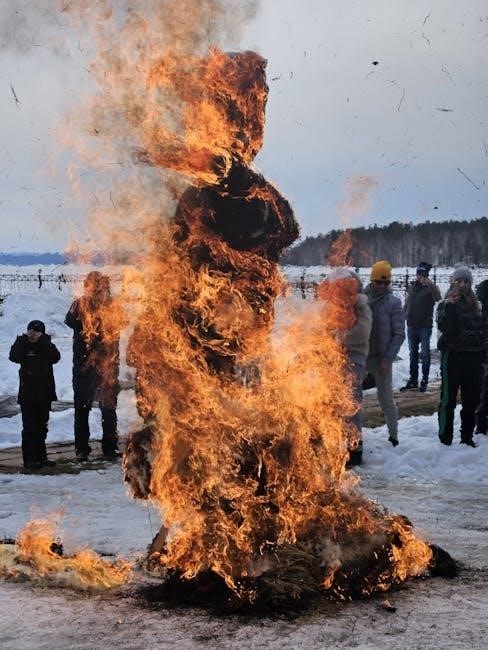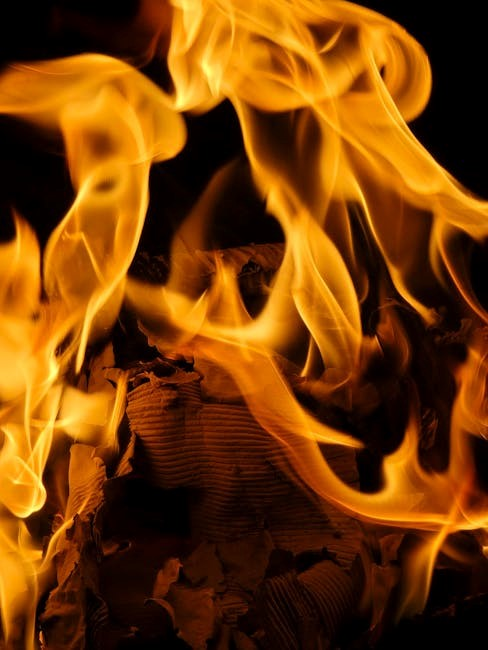This guide provides essential insights for mastering the VEVOR heat press‚ focusing on optimal temperature settings to achieve professional results and avoid material damage during projects.
1.1 Overview of the VEVOR Heat Press
The VEVOR Heat Press is a versatile and durable machine designed for various heattransfer applications‚ including sublimation‚ HTV‚ and custom designs. Known for its robust build and user-friendly interface‚ it offers precise temperature and pressure controls‚ making it ideal for both beginners and professionals. With adjustable parameters‚ it accommodates different materials‚ ensuring high-quality transfers. Its compact design and efficient performance make it a popular choice for crafting and small-scale production.
1.2 Importance of Temperature Control in Heat Pressing
Temperature control is crucial for achieving consistent and professional results in heat pressing. Incorrect settings can damage materials‚ cause uneven transfers‚ or lead to machine malfunction. Proper temperature ensures optimal adhesion of inks or vinyl‚ preventing under-curing or over-curing. It also extends the lifespan of both the heat press and the materials being used. Precise control is essential for delicate substrates like fabrics and ceramics‚ while higher temperatures are needed for durable materials. Balancing these factors ensures high-quality outputs and safety during the pressing process.

Understanding Temperature Settings for Different Materials
Temperature settings vary based on the material being used. Fabrics‚ ceramics‚ and other substrates require specific heat levels to ensure proper adhesion and prevent damage.
2.1 Sublimation Printing: Ideal Temperature Ranges
For sublimation printing‚ the ideal temperature range is typically between 380°F and 400°F (193°C to 204°C). This ensures vibrant color transfer and proper dye fixation. Pressure and time also play crucial roles‚ with 3-4 minutes under medium to high pressure recommended. Higher temperatures may be needed for thicker materials‚ but overheating can damage substrates. Always preheat the press and use a thermal tape for even heat distribution to achieve professional-quality results.
2.2 Heat Transfer Vinyl (HTV): Recommended Temperature Settings
For Heat Transfer Vinyl (HTV)‚ the recommended temperature ranges between 270°F and 300°F (130°C to 149°C)‚ depending on the vinyl type and thickness. Thinner vinyl requires lower temperatures‚ while thicker or metallic vinyl may need higher settings. Pressing time typically ranges from 10 to 20 seconds‚ with light to medium pressure. Ensure proper preheating and use a temperature test scrap to avoid under-heating or scorching the material. Adjustments may be needed for specific vinyl brands or intricate designs.
2.3 Other Materials: Ceramic‚ Glass‚ and Fabric
For ceramics and glass‚ higher temperatures (300-400°F) are required‚ with pressing times of 3-5 minutes. Use heat-resistant tape to secure transfers. Fabric materials like cotton or polyester blends typically need 300-350°F for 10-15 seconds. Thicker fabrics or those with special finishes may require slightly higher temperatures or extended pressing times. Always test settings on scrap material to ensure proper adhesion and avoid damage. Using butta paper is recommended to prevent scorching during the pressing process.

Factors Influencing Temperature Requirements
Material thickness‚ press model‚ and environmental conditions significantly impact temperature needs. Adjustments may be required based on these variables to ensure optimal heat transfer and material safety.
3.1 Material Thickness and Type
Material thickness and type play a crucial role in determining ideal temperature settings. Thicker materials often require higher temperatures to ensure proper heat penetration‚ while thinner materials may need lower settings to prevent damage. For instance‚ fabrics like cotton or polyester have different heat requirements compared to vinyl or ceramic. Understanding the specific thermal needs of your material ensures optimal transfer and prevents overheating or under-transfer. This balance is key to achieving professional-quality results consistently.
3.2 Press Model and Design
Different VEVOR heat press models and designs influence temperature requirements. Advanced models with digital controls offer precise adjustments‚ while manual models may require trial and error. The design of the heating plate‚ insulation‚ and pressure distribution also affects heat uniformity. Newer models often feature improved temperature stability‚ reducing hotspots. Understanding your press’s specific design ensures accurate temperature settings and consistent results‚ minimizing the risk of overheating or underheating during transfers.
3.3 Environmental and Ambient Factors
Environmental conditions‚ such as room temperature and humidity‚ can impact heat press performance. Drafts or extreme ambient temperatures may cause uneven heating. Ensuring the press is in a stable‚ climate-controlled environment minimizes temperature fluctuations. Proper ventilation is also crucial to prevent moisture buildup‚ which can affect heat distribution; Regular calibration of the press in its operating environment helps maintain consistent results and prevents damage to materials or machinery due to external factors.

Safety Precautions and Best Practices
Always wear protective gloves and goggles. Ensure the heat press is placed on a heat-resistant surface‚ away from children and flammable materials to prevent accidents.
4.1 Avoiding Overheating and Damage
Avoiding overheating is crucial to prevent damage to materials and the heat press. Ensure proper temperature settings for your material type‚ as excessive heat can ruin designs or warp surfaces. Regularly inspect heating elements for wear and tear. Use a thermostat or temperature control feature to maintain consistent heat levels. Keep the press clean and well-maintained to avoid unexpected temperature spikes. Always monitor the press during operation to prevent overheating‚ especially with delicate materials. This ensures safety and optimal results for your projects.
4.2 Proper Use of Temperature Controls
Properly using temperature controls ensures precise heat application. Always calibrate the heat press to maintain accuracy. Adjust settings based on material thickness and type. Monitor temperature during use to avoid fluctuations. Follow manufacturer guidelines for specific materials. Regularly inspect heating elements for damage or wear. Use digital controls for precise adjustments. Maintain consistent pressure to ensure even heat distribution. Proper temperature control prevents damage and achieves professional-quality results. Regular maintenance and adherence to guidelines ensure optimal performance and longevity of the heat press;

Troubleshooting Common Temperature Issues
Address uneven pressure and random temperature fluctuations by checking press calibration‚ ensuring proper material alignment‚ and monitoring environmental factors to maintain stable heat press performance.
5.1 Uneven Pressure and Its Effects
Uneven pressure in the VEVOR heat press can lead to inconsistent temperature distribution‚ causing damaged materials or incomplete transfers. Check press calibration and alignment to ensure even pressure application. Adjust the press arms or pads to maintain uniform contact with the substrate. Environmental factors‚ like humidity or uneven surfaces‚ can exacerbate pressure imbalances. Regular maintenance and proper setup are essential to prevent these issues and achieve consistent‚ professional results in heat pressing projects.
5.2 Random Temperature Fluctuations
Random temperature fluctuations in the VEVOR heat press can disrupt printing consistency. Ensure settings are correct and avoid environmental interference. Check for faulty thermostats or sensors‚ as these may cause unpredictable temperature changes. Verify power supply stability and machine calibration. If issues persist‚ consult the user manual or contact support. Maintaining a stable operating environment and performing regular checks can help minimize fluctuations‚ ensuring reliable performance during heat pressing tasks.

Maintenance Tips for Consistent Temperature Performance
Regular calibration ensures accurate temperature control. Clean the press thoroughly and inspect for wear. Replace worn parts promptly to maintain consistent heat distribution and prevent performance issues over time.
6;1 Calibrating the Heat Press
Calibrating your VEVOR heat press is crucial for maintaining accurate temperature control. Start by ensuring the press is preheated to the desired temperature. Use a temperature gun to verify the actual heat plate temperature. Compare it with the digital display to identify any discrepancies. If the readings differ‚ adjust the machine according to the manufacturer’s instructions. Regular calibration prevents uneven heating and ensures consistent results. Perform this process every 1-3 months or after noticing temperature fluctuations. Proper calibration is key to achieving professional-quality transfers and extending the machine’s lifespan.
6.2 Cleaning and Upkeeping the Machine
Regular cleaning and maintenance are vital for the longevity and performance of your VEVOR heat press. Use a soft‚ dry cloth to wipe down the heat plate and surfaces after each use‚ removing ink‚ vinyl‚ or sublimation residue. Avoid abrasive cleaners to prevent damage. Check for worn-out parts like silicone pads or cushions and replace them as needed. Dust internal components to prevent overheating. Proper upkeep ensures consistent temperature control‚ even pressure distribution‚ and optimal machine functionality. Schedule maintenance every 3 months for best results.

Creative Applications and Projects
The VEVOR heat press opens doors to endless creative possibilities‚ enabling you to craft unique designs on fabrics‚ ceramics‚ glass‚ and more with precision and ease.
7.1 Custom Designs for Apparel and Accessories
Using the VEVOR heat press‚ you can create stunning custom designs for apparel and accessories. Perfect for t-shirts‚ hoodies‚ hats‚ and bags‚ it allows for precise application of heat transfer vinyl and sublimation designs. With adjustable temperature and pressure settings‚ you can achieve vibrant‚ long-lasting results on various fabrics. Whether it’s personalized gifts or unique fashion statements‚ this tool makes it easy to bring creative ideas to life with professional-quality finishes.
7.2 Sublimation on Ceramics and Glass
Sublimation on ceramics and glass offers a creative way to add vibrant‚ permanent designs. The VEVOR heat press can handle these materials‚ but requires precise temperature control. Ensure the press reaches the material’s required temperature‚ typically between 350°F to 400°F. However‚ some users note the press maxes out at 400°F‚ which may limit its suitability for high-temperature sublimation projects. Proper pressure and timing are crucial for durable‚ high-quality results on these surfaces.
Mastering the VEVOR heat press temperature guide ensures optimal results and prevents material damage. Proper settings and safety precautions lead to professional-quality designs and lasting durability in projects.
8.1 Summary of Key Temperature Guidelines
To achieve optimal results with your VEVOR heat press‚ adhere to specific temperature ranges for materials like sublimation (300-400°F) and HTV (270-300°F). Proper calibration ensures accuracy‚ while regular maintenance prevents fluctuations. Adjust settings based on material thickness and type‚ and monitor environmental factors. Avoid overheating to prevent damage. By following these guidelines‚ you can ensure consistent‚ professional-quality transfers and extend the lifespan of your heat press. Always refer to the guide for material-specific recommendations.
8.2 Final Tips for Achieving Professional Results
For professional outcomes‚ always test temperature settings on scrap material before final projects. Use a thermometer to ensure accuracy and adjust press time based on material thickness. Maintain even pressure distribution to prevent uneven transfers. Regularly clean and calibrate your press to uphold performance. Follow material-specific guidelines and avoid exceeding recommended temperatures to preserve both your press and substrates. Consistency and attention to detail are key to achieving flawless‚ long-lasting results.

